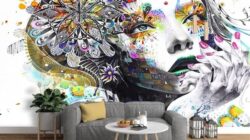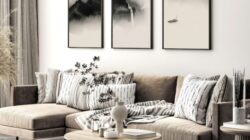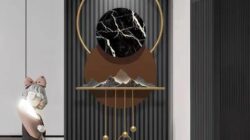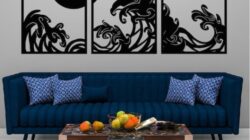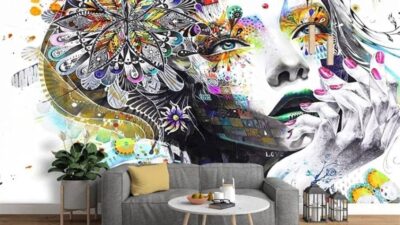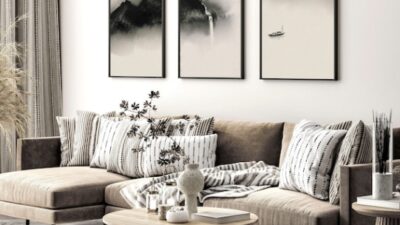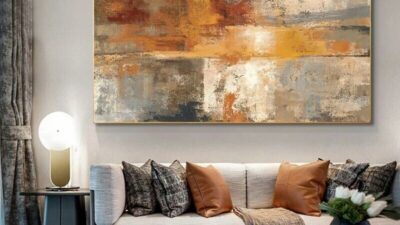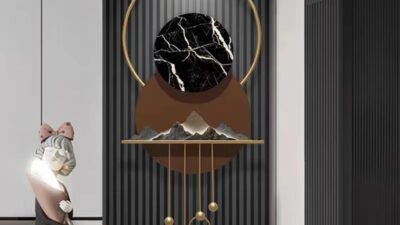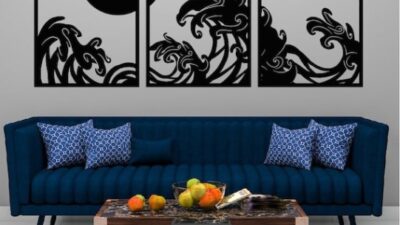Contrast is the unsung hero of Interior Design. It’s the dynamic tension between light and dark, smooth and rough, bold and subtle. When used strategically, contrast can elevate a space from ordinary to extraordinary.
The Art of Contrast in Wall Art
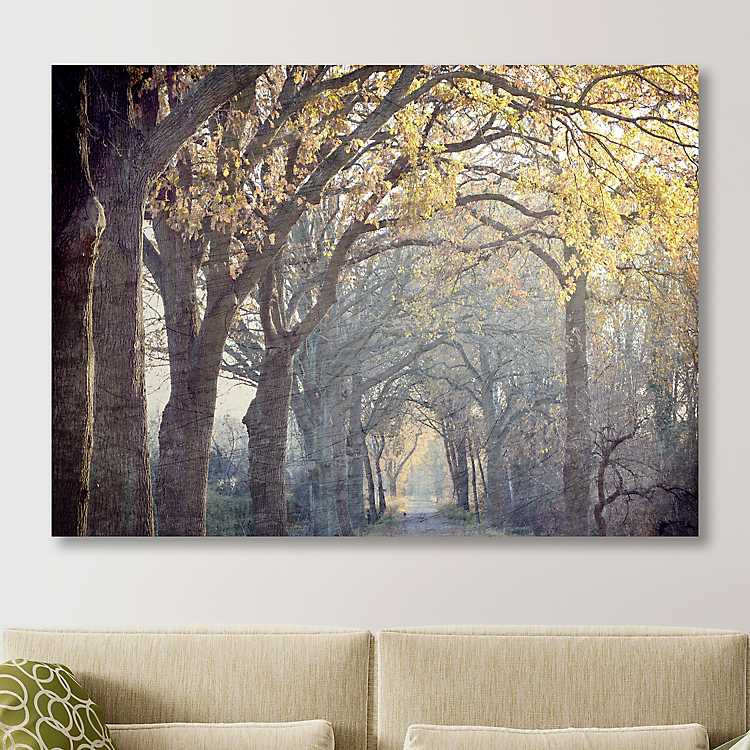
Image Source: kirklands.com
In the realm of wall art, contrast can be achieved in a multitude of ways:
Color Contrast: Pairing complementary colors, such as blue and orange or purple and yellow, creates a vibrant and eye-catching display.
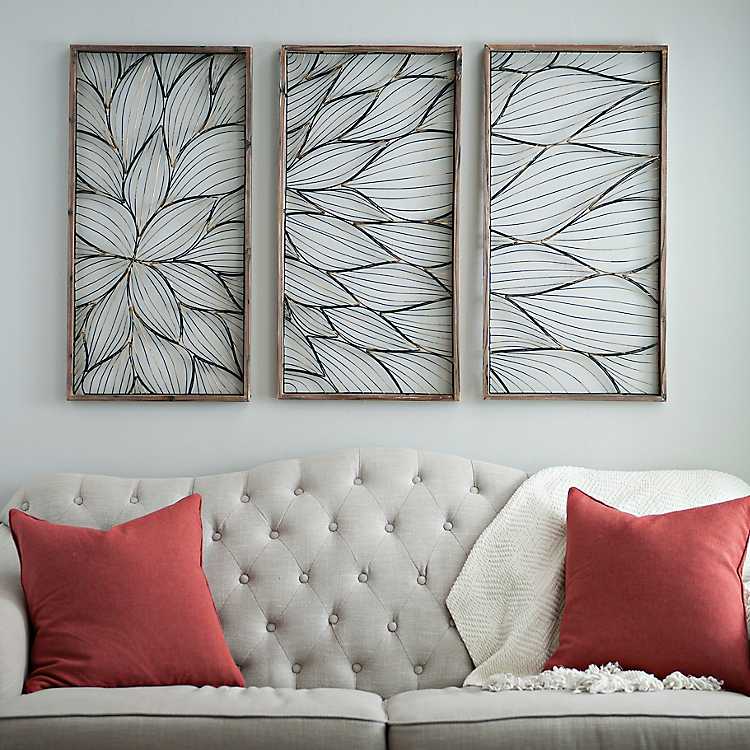
Image Source: kirklands.com
How to Incorporate Contrast into Your Space
1. Start with a Strong Foundation:
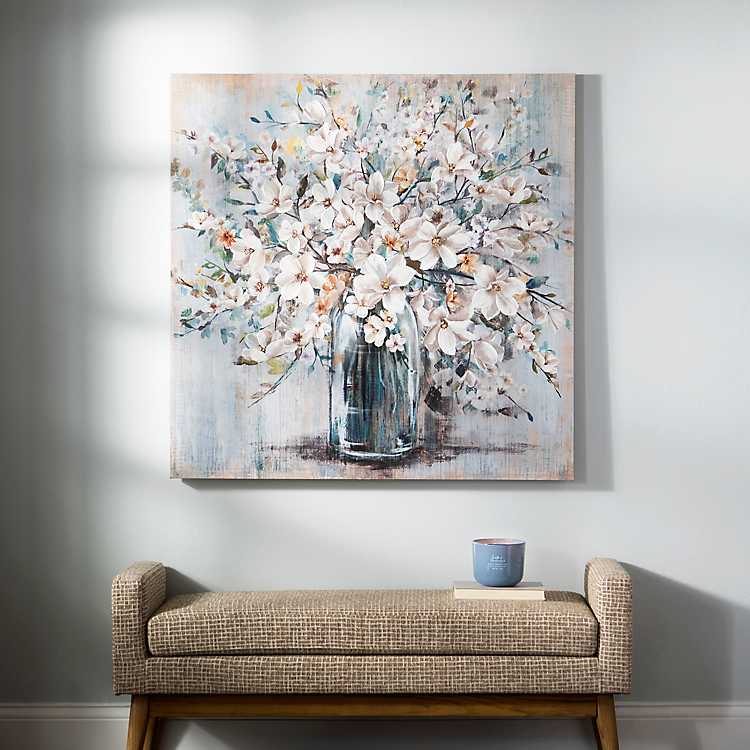
Image Source: kirklands.com
2. Select Your Artwork:
3. Arrange Your Artwork:
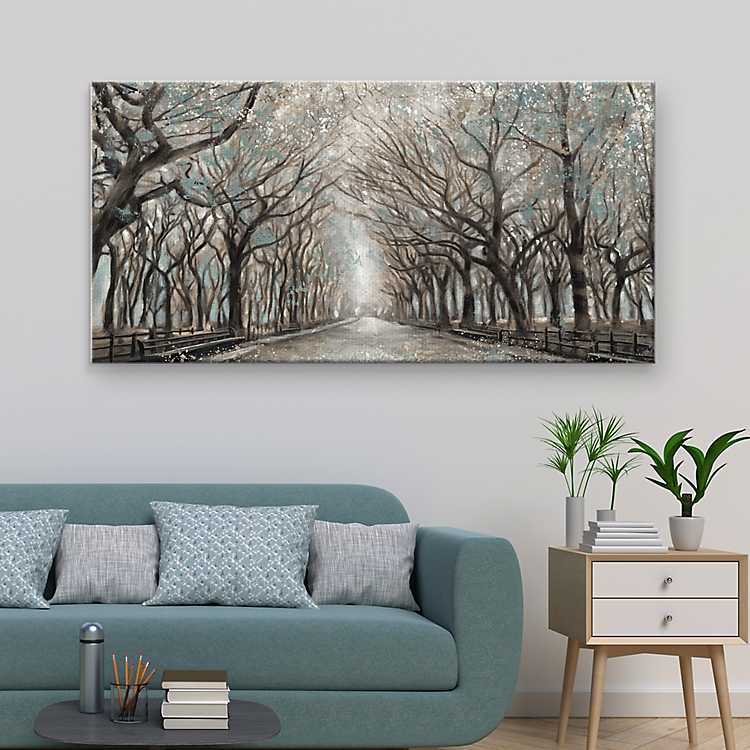
Image Source: kirklands.com
Tips for Creating a Harmonious Contrast
Balance is Key: While contrast is important, it’s essential to maintain balance in your space. Too much contrast can be overwhelming, so be sure to incorporate elements that complement each other.
By embracing the power of contrast, you can create a truly unique and inspiring space. So go ahead, step outside your comfort zone, and let your creativity soar!
Color is the heartbeat of any space. It can evoke emotions, set the mood, and completely transform the look and feel of a room. When it comes to wall art, color is your secret weapon.
Monochromatic Magic
Don’t be afraid to go all in on a single color. A monochromatic color scheme can create a sense of calm and sophistication. Think soft grays, muted blues, or earthy tones. A collection of black and white photographs or a series of abstract paintings in shades of gray can add depth and dimension to your walls.
Bold and Beautiful
If you’re looking to make a statement, bold colors are the way to go. A vibrant, colorful piece of art can be the focal point of your room. Whether it’s a bright abstract painting, a colorful tapestry, or a neon sign, a bold piece of art can instantly elevate the energy of your space.
Subtle Hues
Sometimes, less is more. Soft, muted colors can create a serene and peaceful atmosphere. Pastel-colored prints, watercolor paintings, or botanical illustrations can add a touch of elegance and sophistication to your walls.
Mixing and Matching
Don’t be afraid to experiment with different colors and patterns. A mix of bold and subtle colors can create a visually interesting and dynamic space. For example, you could pair a vibrant abstract painting with a soft, muted landscape.
Color Psychology
Did you know that certain colors can evoke specific emotions? For example, blue is often associated with calmness and tranquility, while red is associated with energy and passion. When choosing colors for your wall art, consider the mood you want to create in your space.
Seasonal Shifts
As the seasons change, so can your wall art. In the spring, you might opt for light and airy pastels. In the fall, you could choose warm, earthy tones. By changing your wall art with the seasons, you can keep your space feeling fresh and inviting all year round.
Personalize Your Space
One of the best things about wall art is that it allows you to express your personality. Choose pieces that reflect your interests, hobbies, and passions. Whether it’s a collection of vintage movie posters, a gallery wall of family photos, or a piece of art that you created yourself, your wall art should be a reflection of who you are.
The Power of Pattern
Pattern can add texture, depth, and visual interest to your walls. Whether it’s a geometric print, a floral pattern, or a bold stripe, pattern can help you create a unique and stylish space.
Layering and Texture
Don’t be afraid to layer different textures and materials. A mix of smooth and rough, shiny and matte, can add depth and dimension to your walls. For example, you could hang a tapestry over a gallery wall of framed prints.
Lighting is Key
The right lighting can make all the difference in how your wall art looks. Use a combination of ambient, task, and accent lighting to highlight your pieces. A well-lit piece of art will draw the eye and create a focal point in your room.
Don’t Be Afraid to Experiment
There are no hard and fast rules when it comes to wall art. Don’t be afraid to experiment and have fun. Try different colors, patterns, and styles until you find something that you love.
Remember, your walls are a blank canvas. Use them to express yourself and create a space that you love.
3. Gallery Wall Magic: A Personalized Art Showcase
Imagine a wall, a blank canvas, waiting to be transformed into a masterpiece. A gallery wall is more than just a collection of art; it’s a curated story, a visual narrative that reflects your unique personality and style. With Kirkland’s diverse range of wall art, crafting a personalized gallery wall is easier than ever.
The Art of Arrangement
The key to a stunning gallery wall lies in the arrangement. This is where the fun begins! Experiment with different layouts, from symmetrical grids to eclectic clusters. Consider the size and shape of your wall, the number of pieces you want to include, and the overall aesthetic you’re aiming for.
Symmetrical Grid: This classic approach creates a sense of balance and order. Start with a central piece and build outward, ensuring equal spacing between each frame.
Choosing the Perfect Pieces
The heart of any gallery wall lies in the artwork itself. Kirkland’s offers a vast selection of wall art, from vibrant abstract paintings to serene landscapes and captivating typography. When selecting pieces for your gallery wall, consider the following:
Color Palette: Choose a cohesive color palette that complements your room’s existing decor. You can opt for a monochromatic scheme, a harmonious blend of complementary colors, or a bold and eclectic mix.
Framing and Matting
The right frame can elevate even the simplest piece of art. Kirkland’s offers a variety of frames in different materials, colors, and styles. When choosing frames, consider the following:
Material: Wood, metal, and plastic are popular framing materials. Wood frames offer a classic and timeless look, while metal frames provide a modern and industrial feel.
Hanging Tips
Hanging your gallery wall can be a bit tricky, but with a little planning and patience, you can achieve a professional-looking result. Here are a few tips:
Measure and Mark: Before hanging, measure and mark the wall to ensure even spacing between each piece.
By following these tips and unleashing your creativity, you can transform a blank wall into a stunning gallery wall that reflects your unique style and personality. Kirkland’s wide range of wall art and Accessories makes it easy to create a personalized space that you’ll love.
Vintage wall art is more than just Decoration; it’s a journey through time, a piece of history brought into your Home. It’s the worn edges, faded colors, and antique charm that make vintage pieces so irresistible. Here’s why you should consider incorporating vintage wall art into your space:
1. Unique Character and Personality
Vintage pieces are one-of-a-kind, often with a story behind them. They add a unique character to your space that mass-produced prints simply can’t match. Whether it’s a retro travel poster, an old painting, or a vintage photograph, each piece has its own distinct personality.
2. A Nod to the Past
Vintage wall art can transport you to a different era. It’s a great way to pay homage to a bygone era, whether it’s the roaring twenties, the swinging sixties, or the psychedelic seventies.
3. Eclectic and Boho Chic
Vintage pieces are perfect for creating an eclectic or boho-chic look. They can be mixed and matched with other styles to create a truly unique and personal space.
4. Timeless Appeal
While trends come and go, vintage style remains timeless. A well-chosen vintage piece can elevate your decor and stand the test of time.
Tips for Incorporating Vintage Wall Art into Your Home:
Choose Pieces That Speak to You: The most important thing is to choose pieces that you love. Don’t be afraid to mix and match different styles and periods.
Where to Find Vintage Wall Art:
Thrift Stores and Flea Markets: These are great places to find unique vintage pieces at affordable prices.
By incorporating vintage wall art into your home, you can create a space that is both stylish and timeless. So, the next time you’re looking to add a touch of personality to your walls, consider the enduring charm of vintage.
kirklands wall art

